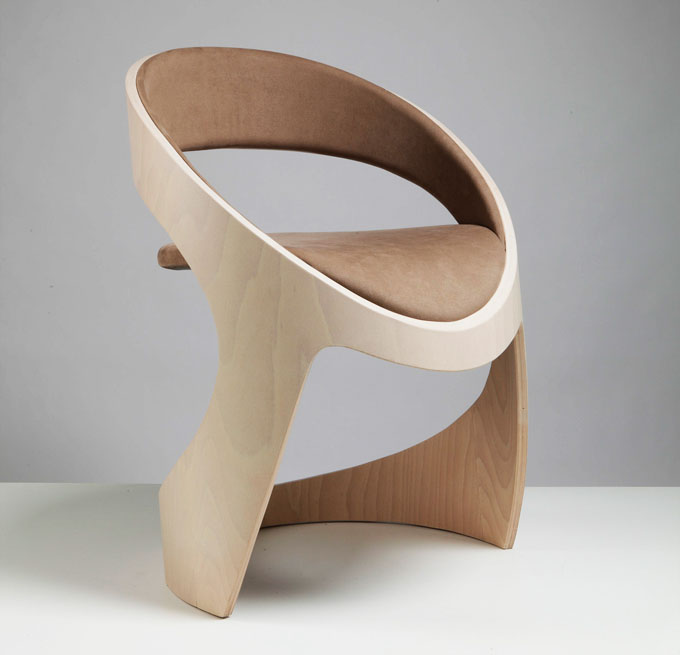Table Of Content
This landmark design, produced by Fritz Hansen, became the basis for many other designs including the similarly constructed and massive selling 3107 chair from his Series 7 seating chair. Whether in vivid colors or a classic leather upholstery, this is one mid-century chair that endures. It was designed in 1958 by Arne Jacobsen and was created for the Royal Hotel in Copenhagen, along with the Egg chair. Guests could spin around using the swivel base or sit still using the comfortable arm rests. The chair itself does not have any straight lines, making it a unique design feat in and of itself. Mid-century furniture rejected the detailed and extravagant designs that had been popular for centuries prior.
Charles and Ray Eames Eames Lounge Chair
And while such tasteful design objects are worthy of being savored as museum-worthy specimens, they were also intended to support everyday life. So, by all means, appreciate them from afar or bring one into your home to be used as it was intended. Read on for the 20 chair designs we believe are worth knowing—and, if you’re feeling inspired, owning.
Black Label Collection
Perhaps your preferences lean toward the bohemian because of the mix of textures and the light, natural elements, or maybe you love the look of a farmhouse room for its welcoming warmth. A luxurious modern bedroom filled with rich colors and opulent materials can make your bedroom feel like a five-star getaway. With our wide selection of beds, nightstands, dressers, benches, and more, your bedroom will become your new favorite space.
Write Out Your Future: Hand Letter an Inspiring Phrase
And, over the course of this long history, certain perches stand (or should we say, sit!) out as timeless classics, referred to time and time again as the cycle of design continues. From antique pieces that inspired modern interpretations to original designs that remain as popular today as when they were first introduced, these 50 chairs are the ones that have made the biggest impact on design history. They run the gamut in terms of style (Louis XIV! Futuristic! Midcentury! Utilitarian!), era (Ancient Greece right up to the 21st Century), and region of origin (Malawi to Milan), but each deserves a place in the design history books. We're sure you'll find a few familiar shapes in there—and hopefully learn how to spot many new ones.

Eero Saarinen Tulip Chair
Designed in 1934, Jean Prouvé's steel and wood Standard Chair showcases the power of simplicity. The innovative chair features pairs of legs that vary in size and shape; thick back legs handle the weight of the individual, while slender steel front legs put a stylish spin on the practical design. The legs are available in a range of colors, while the seat can be customized with wood, plastic, or upholstery.
Gorgeous Chairs Every Modern Design Fan Should Know
The chairs can be found in the permanent collections of museums like MoMA and the V&A. If the LCW is the workaday sedan of design, the Eames lounge chair and matching ottoman, No. 670 and 671, are the Rolls-Royce of 20th-century chairs. “Unlike most other chairs by Charles and Ray Eames, this one was aimed squarely at the luxury end of the market,” Fiell says. “It was and remains very expensive.” It’s one of the most instantly recognizable designs by the Eames duo—and for good reason.
Beetle Lounge Chair
We’ve put together our list of inspired bedroom ideas to create a welcoming retreat you’ll enjoy night after night. Hans Wegner has designed almost 500 chairs over the course of his career, but the Papa Bear is a definite favorite. One critic likened the model's stretched out arms to "great bear paws embracing you from behind." I’ve linked to the original, authentic chair in many of the captions as well as some more affordable dupes, when possible.
Inside LACMA’s plans to share its collection with a new Las Vegas museum: ‘I’m a West Coast booster’
52 Best Online Furniture Stores to Bookmark Now (2024) - Architectural Digest
52 Best Online Furniture Stores to Bookmark Now ( .
Posted: Wed, 10 Apr 2024 07:00:00 GMT [source]
Arne Jacobsen was already an esteemed architect when he designed this lightweight stacking chair for the factory canteen of the Danish pharmaceutical firm Novo Nordisk. It was the first chair to be made from a single piece of plywood, featuring a slightly curved seat that was designed with the body’s needs in mind. In fact, it almost ended up being another one of Jacobsen’s prototypes as Novo ordered only 300 chairs. It was only in 1980 after Jacobsen’s death (he was adamant about the three legs) that a fourth leg was added and a variety of colors was offered.
Eero Saarinen Womb Chair
The graceful shape of the wishbone chair is inspired by East Asian design and modernist ideals. In the 1940s, Danish designer Hans Wegner saw a series of photographs of Chinese tradesmen—and became fascinated with the chairs on which they were sitting. He set about creating his own version of the Ming chair, incorporating a curved, bent-wood armrest and the namesake back, whose pronged wishbone shape allowed for a more graceful silhouette.
Again, inspiration from the past serves as fodder for contemporary novelties. Conceived in 2002 by French architect Philippe Starck for Kartell, an Italian company known for its contemporary plastic furniture, the Louis Ghost chair is a fresh take on French regal elegance. “The technical experimentation that resulted in the advent of the see-through chair was a painstaking and difficult journey, involving highly intensive research,” Miller writes. “But, once resolved, it allowed Starck and the manufacturer Kartell to progress with more sophisticated forms.” The result is the world’s first line of totally transparent polycarbonate chairs. The Louis Ghost chair—one of the best selling chairs of the 21st century—flaunted a fitting marriage of old and new. Inspired by a painting of Danish merchants in Ming dynasty chairs in 1944, the Wishbone chair was drawn up exclusively for Carl Hansen & Søn in 1949.
Known for its high back, plush upholstery, and ornate details, the Louis XIV chair continues to be the epitome of old-school elegance. With a geometric design and a slightly reclining back, this is one chair you’ll adore in your home. It was crafted in the Chandigarh design making it a timeless statement chair. Eero Saarinen designed the Womb chair on the theory that many people have never really felt security and comfort since they left the womb. The high back, wrap around edges and arm indentations are meant to help the occupant feel safe and secure.
The designer was inspired by the blending of modern European ideals and the traditional Indian spirit after his India trip in 1967. Next on our list of classic mid-century modern chair designs is the tulip chair. This chair was included in the Pedestal Collection of Eero Saarinen because of the single leg underneath the base of the seat. Tulip chairs typically swivel with an aluminum base and molded fiberglass shell. The tulip chair is most often white with an accent color for the seat cushion. From the 1920s through the 1960s, a selection of the world's top designers and architects turned their attention toward seating.
The Danish joinery workshop PP Møbler initiated the production of this now-famous chair in 1986, and the design is still made-to-order today due to its extremely intricate production process. Designed in 1938 in Buenos Aires by architects Antonio Bonet, Juan Kurchan, and Jorge Ferrari Hardoy, the Butterfly Chair is the ultimate icon for boho design lovers due to its sumptuous leather-and-iron simplicity. The three Le Corbusier studio alums created a design so pervasive that today, many are hard-pressed to cite its South American origins.
In 1948, Knoll received exclusive rights to manufacture the coveted chair design. In 2002, designer Philippe Starck put his own spin on the Louis XVI armchair, rendering it in clear polycarbonate for Kartell. The design—which is offered both as an armchair and without arms—became an instant sensation...and spurred dozens of knockoffs. When Eero Saarinen first began working with Florence Knoll, she challenged him to create the world's most comfortable chair. Enter, the aptly-named chair, first released in 1948 and continually produced by Knoll since then.
Made of supple leather, chromium steel, or luxe velvet, these 19 iconic chairs have curves in all the right places and illustrate that when form meets function, beautiful things happen. A good statement chair is not a steal, but rather it is an investment that will last a lifetime and will never go out of style. Finnish interior designer Eero Aarnio is known for a unique aesthetic characterized by his use of sleek materials and unconventional shapes. A key example of his eccentric work is the Ball Chair, a mod, orb-shaped seat designed in 1963. The Ball Chair is made of plywood, fiberglass, and upholstery, and offers a quirky and cozy place to perch in peace. But, did you know the Eames drew inspiration from a first baseman's worn-in mitt?
The chair caught the attention of curators at MoMA, who requested a model. In 1947, Knoll began carrying it, swapping out the original black legs for polished chrome—but stopped production in 1951. Now, versions of the chair style can be found everywhere from CB2 to Target. Louis XVI was France's last monarch before the country's revolution (and the husband of Marie Antoinette). Chairs from the time of his reign are characterized by rounded seat backs—which are often curved for comfort—and plush seats. A revived interest in classical style makes for details that nod to Greek and Roman decoration, like carved, fluted legs reminiscent of classic columns.












